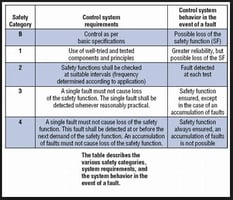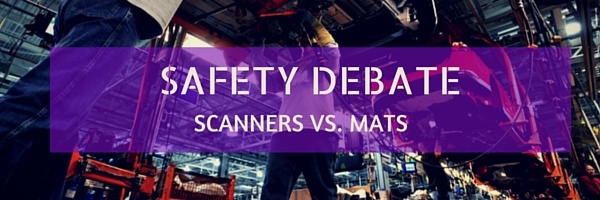ISO 13849-1 is the most important standard for regulating the basic principles and performance...
STOP! Safety Switches Halt Risks

STOP!
When you were a kid playing ball your parents probably had to yell this at least once when your ball (inevitably) went into the street. Why was this so important? Because your parents had your safety in mind, they didn’t want you to get hit by a car!
20+ years later you are now working on or around machinery that may be just as dangerous as that busy street you grew up on. But your parents are not standing behind you just waiting to yell “Stop!” whenever they see a potential hazard approaching. So what do you do?
Using Industrial Switches for Machine Safety
For machine builders, that's typically a job for safety switches. They allow safe access to dangerous machines by putting systems in a harmless state, allowing processes or maintenance to be performed safely. Application is important for selecting the right safety device; for example, for the machine that needs to be opened only once a year, the best solution is probably to use simple hard guards. When access has to be more frequent, but not constant, using safety interlocks may be the better solution.
Types of Safety Switches
Tongue Interlocking Switch
The tongue interlocking switch is the simplest, often lowest-cost and most operationally robust safety solution. These safety interlocks have a tongue actuator on one door that forces apart contacts in a switch attached to another door. Pulling out the tongue signals that the door has opened, and the machine should be stopped.
Trapped Key System
Another slightly more complex option for safety devices is a trapped key system, these are best for sequential access, which requires going through a series to steps to get to the area in question. Trapped key systems also could be the method of choice in a hazardous location because some require no voltage to operate.
Guard-locking Switches
When your machine has a long time/cycle to come to a complete stop, guard-locking switches are likely best. There has to be some way to keep the door or other access points closed until the motion has stopped. This can be done through a safety switch that does not release a guard until certain conditions, such as a long enough period of time, have been met. Guard-locking switches also can handle cases in which a chance for serious bodily injury exists, and power is lost to a machine. The only way for access to the machine is to have power available to unlock the switch.
Non-Contact Safety Interlocks
In other circumstances, non-contact safety interlocks are best. There are several technology choices, such as coded magnets or a radio frequency identification (RFID) reader and tag(s). No matter the technology, these interlock switches all have built-in safeguards that prevent an easy defeat of the safety function.
Industrial Safety Switches (or Disconnect Switches)
Last but not least there may be times when nothing less than a complete power shut-off will do. In that case, you should consider an industrial safety switch. These safety devices (often called disconnect switches) are built with a pull lever or handle and are part of most any standard electrical portfolio.
Electrical code requires that a disconnect switch be placed on every piece of equipment in a facility; it should be easily visible and within 50 feet of the device it is connected to. By cutting power, these switches allow servicing of machinery without risk of electrical injury and also provide an emergency shut-off.
The switches themselves are simple in operation, with a quick-make/quick-break technology that hasn't changed significantly in years. When contacts are closed they are energized, allowing power to flow through; power stops when contacts are open, either by someone moving a handle or, if the switch is fused, by an overcurrent situation.
If it's important to keep a machine fault isolated from other devices upstream, then a fusible switch (or breaker disconnect) should be used if a motor or another component with a rush of starting current is involved, it might be best to go with a time-delay fuse to permit additional current draw during start-up.
Switches as Safety Devices
So next time you are designing a piece of equipment, installing machinery or working in a plant remember that safety can come in a variety of forms. We no longer can expect to have someone yell “STOP!” when we are in danger of getting hurt, so be careful out there! Safety switches can look out for your well-being when you're on the factory floor.
If you're interested in learning more about safety switches, other safety devices, or common manufacturing safety concerns, talk to one of our experts and we'll walk you through the best options available today.
You may also be interested in reading:
- Machine Safety Today: Protect Your Most Valuable Asset
- Safety Can Increase Productivity
- Safety Laser Scanners vs. Safety Mats
- Conducting Risk Assessments





